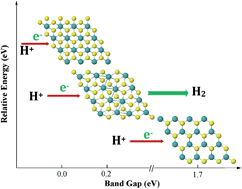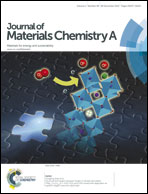Site-specific catalytic activity in exfoliated MoS2 single-layer polytypes for hydrogen evolution: basal plane and edges
Abstract
We performed ab initio calculations on the basic set of MoS2 single-layer materials, namely the 1H, 1T and 1T′ polytypes, to lay a theoretical framework on the emerging breakthrough-discoveries of high activity towards the hydrogen evolution reaction (HER) in exfoliated MoS2 and related materials. Our calculations show that for exfoliated MoS2, 1T′ is the most HER active polytype, with active sites both on the basal plane and at the edges of the layered grains. In comparison, the basal planes of the 1H and 1T polytypes are HER inactive and their edge-sites are not as active as those of the 1T′ polytype. We also found that 1T-MoS2 is unstable and easily transforms into 1T′-MoS2, and the 1T′ phase is metastable with a considerable barrier >0.7 eV to bar its transformation into the most stable 1H phase. Further, unlike the case of exfoliated WS2, the HER activity of exfoliated MoS2 is not so critically affected by the lattice strain. In addition, in contrast to the 1T′-WS2, the 1T′-MoS2 is not metallic but has a very small bandgap of 0.1–0.2 eV. Hence, 1T′-MoS2 should have a high enough conductivity and other suitable properties for it to function as an electrochemical HER catalyst.

- This article is part of the themed collection: 2014 Journal of Materials Chemistry A Hot Articles

 Please wait while we load your content...
Please wait while we load your content...